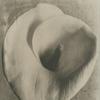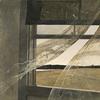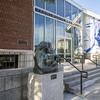Corcoran Gives Over 10,750 Artworks to Institutions
- WASHINGTON, DC
- /
- May 14, 2018
The Corcoran Art Gallery Board of Trustees on Monday announced that more than 10,750 works remaining in the Corcoran’s art collection will be distributed to 22 institutions across Washington in one of the largest free art
distributions in U.S. history.
The distribution includes paintings, prints, drawings, sculpture, textiles, and photographs featuring internationally recognized artists such as Ansel Adams, Gene Davis, Walker Evans, Helen Frankenthaler, Sam Gilliam, Dorothea Lange, and many others.
Honoring the Board’s previously stated commitment to preserve the Corcoran legacy in Washington, 99.4 percent of the Corcoran’s total art collection will remain in the city. This includes today’s distribution and 8,631 artworks previously accessioned by the National Gallery of Art after the Corcoran museum closed in 2014. A complete listing of artwork and recipient organizations can be found on the Corcoran website at corcoran.org/artdistribution.
“I applaud the Corcoran Board of Trustees, who worked so diligently to honor the legacy of William Wilson Corcoran and keep the Corcoran’s art collection in Washington. Residents, students, teachers, historians, and visitors from around the world will all benefit from these artworks being kept in DC, where they will be preserved and made available for the public to enjoy,” said Washington Mayor Muriel Bowser.
Recipient organizations include local universities (American University, The George Washington University, Georgetown University, Howard University, and the University of the District of Columbia); museums (Anacostia Community Museum, the National Portrait Gallery and seven other Smithsonian Institutions, The Kreeger Museum, the National Museum of Women in the Arts, the Phillips Collection and the National Gallery
of Art); and locations appropriate for specific artworks, such as the Supreme Court of the United States receiving a painting of Chief Justice John Marshall.
The recipient organizations will take possession of their selected artworks in the next few months, and they only pay for packing, transportation and insurance costs. Additionally, the recipients have committed to keeping the artwork in the city for display and for student and scholarly study.
As is common with museums, approximately 80 percent of the art in the Corcoran Collection are on paper, including drawings, prints, and photographs. Many of these are unframed and safely stored until needed for an exhibition or study. The bulk of the Corcoran’s famous works on paper collection will be transferred to the American University Museum at the Katzen Arts Center where it will be preserved nearly in its entirety.
“As a proud member of the Washington Color School, I have a long history of creating and exhibiting my art in this town, and strong emotional ties to the city and its many cultural institutions. I am deeply gratified that the Corcoran’s extensive art collection, from the Color School and so many other talented artists, will remain here in DC,” said famed artist Sam Gilliam.
Of the entire Corcoran collection of 19,493 artworks, only 109 (0.6 percent of the total) are estimated to be leaving the District, including lace and other decorative work slated for the Smithsonian’s Cooper Hewitt Design Museum in Manhattan, and 17 artworks going to locations having a specific connection to the work, the artist and the Corcoran.
Distribution decisions were made by the Corcoran Board of Trustees after a multi-year process of evaluating requests submitted by institutions and organizations in Washington and nationwide. Three former Corcoran curators were hired to help evaluate these requests, and the curators operated under anonymity, so they could give candid assessments and recommendations to the Board.
“We are extremely pleased to distribute the Corcoran collection to so many worthy institutions across the city,” said Corcoran Board of Trustees Chairman Harry Hopper. “The Corcoran legacy is threefold: The school, which continues operation as part of The George Washington University, educating future generations of artists; the building, which is getting the much-needed repairs and renovation to preserve it for the future; and the Corcoran art collection, which remains in Washington to be exhibited across the city for generations to come.”












